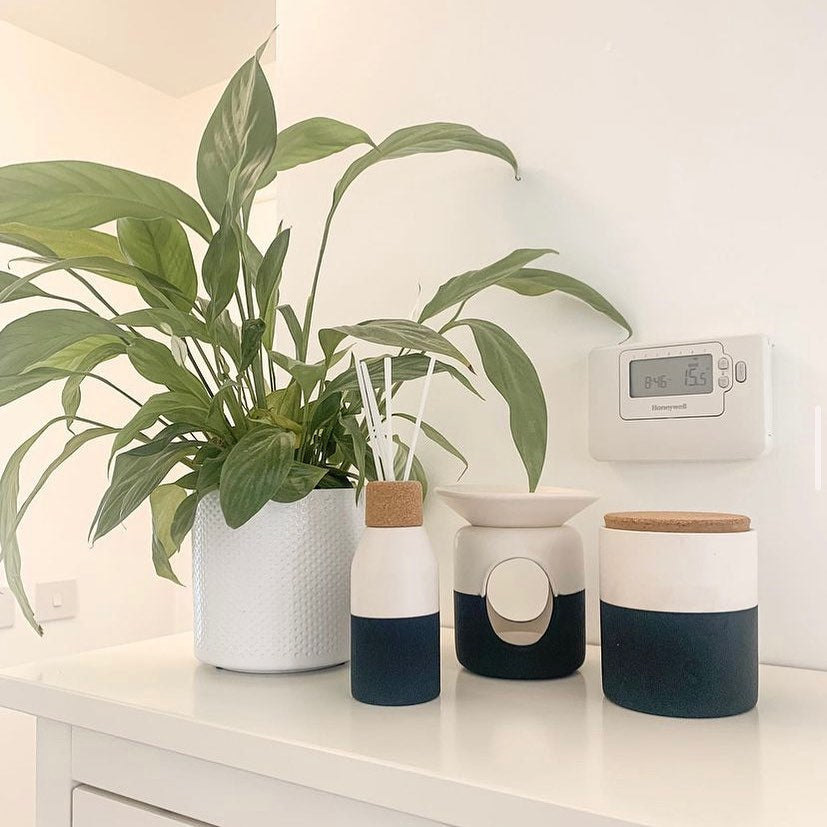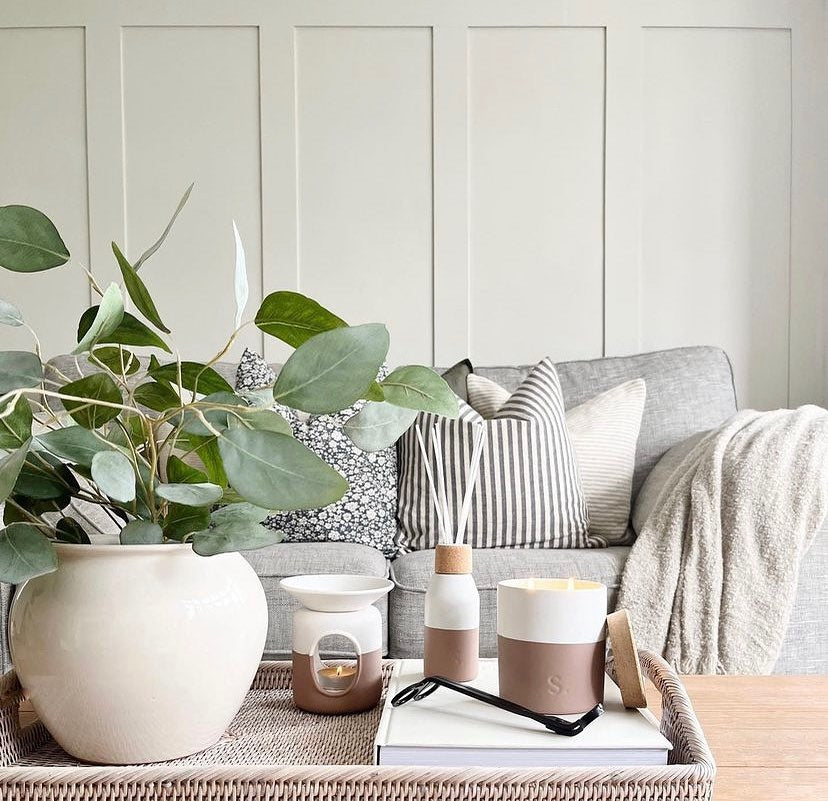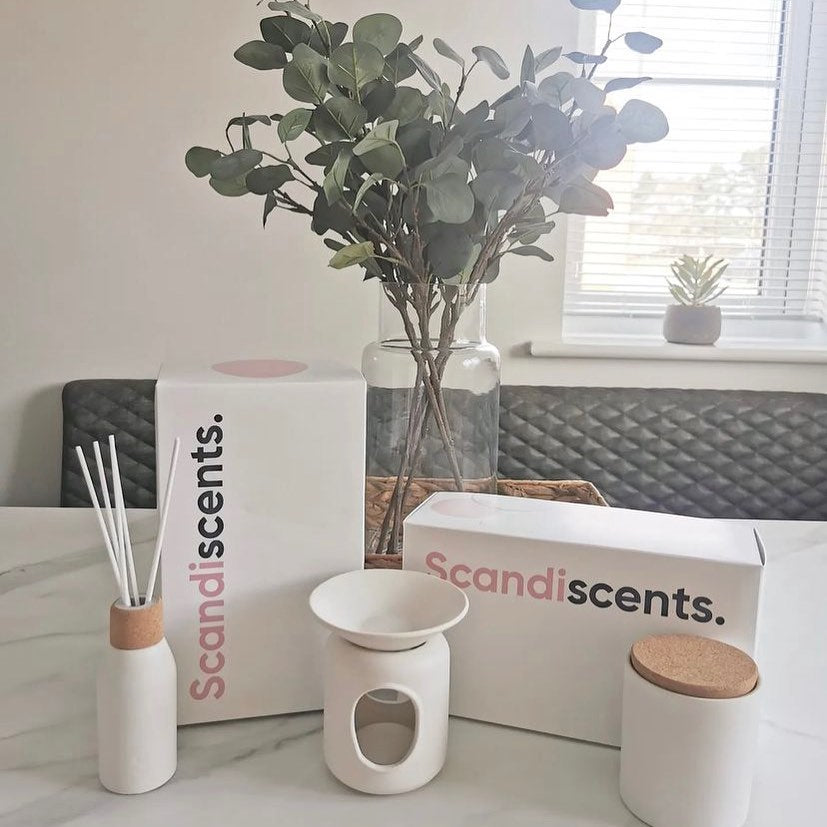We spend a lot of time and thought visually building our "ideal" home environment as home décor and design aficionados, but how often do we consider how it smells? We've prepared a thorough guide filled with everything you need to know to ensure your house smells as good as it looks, from the psychology of aromas to eradicating undesirable odours to adding home fragrance with elegance.
Home Fragrances: A Brief History
It's not a new notion to want a house that smells good. In reality, we've been incorporating smells into our houses for millennia. Ancient Egyptian, Chinese, and Greek cultures were among the first to use smells in sacrificial offerings, medical reasons, and, of course, refreshing interior spaces, according to hieroglyphics and relics. But it was under the reign of Louis XV, who required a different scent for his apartment every day, that the usage of fragrance for house refreshing truly took off in Europe in the 18th century.
Today's home fragrance technology comes in a variety of smells and dispersion techniques, and it's used for more than simply adding aroma to the air; it's also utilised to remove odours and add style to our houses.
How are Scents Created?
The process of changing and blending molecules from natural and synthetic sources to create the correct balance of aromatic notes is fairly complicated in the art of scent creation. Natural smells have witnessed a surge in popularity in the last decade as they've been shown to offer far-reaching health and well-being advantages.
Extraction:
The method of extracting oils from natural materials such as flowers, herbs, and other natural materials is the first stage in the fragrance-making process. Compression (pressing the substance until the oil is produced) and distillation (using steam to extract the essence) are two popular techniques.
Blending:
The extracted essences are then subjected to extensive blending and testing to get the optimum blend. It's then combined with a diluting agent like alcohol.
Ageing:
When the mix is finished, it's usually kept in a dark, cold spot for a few months to let the alcohol and oils bind.
Scent and Memory: How Scent Affects Our Memory
Smells are frequently associated with memories and can transfer us to a different time and location. The olfactory bulb (placed in the emotional centre of the brain) and the brain's conditioned reactions work together to achieve this.
When you smell something new, your brain creates a link between that fragrance and a certain instant in time: the individual you were with, the feelings you were experiencing, or the event that was happening around you. Once that link is established, your brain is programmed to recall the memories the next time you smell the same scent. That's why, as soon as Autumn arrives, we're seeking everything pumpkin-spice-scented!
Scent & Mood
Smells can impact our moods as well, according to the conditioned reactions in our brain. With the information below, you may learn which smells promote certain moods and behaviours.
Elevating Scents: Green aromas like peppermint, basil, cucumber, eucalyptus, newly cut grass, and acidic citrus fruits like grapefruit, lemon, and orange are believed to uplift the senses, relieve exhaustion, and increase alertness.
Relaxing Scents: Floral scents such as lavender, rose, orange blossom, and jasmine are thought to reduce stress hormones in the blood and so dissipate tension and aggression.
Aphrodisiac Scents: Looking for a little romance, or perhaps an aphrodisiac, in your life? When combined with a couple's pheromones, jasmine, neroli, sandalwood, and vanilla are said to strengthen their bond.
Cognitive Performance Scents: Cinnamon has been related to boosting cognitive skills such as memory and sensory reflexes, according to experts.
Smells that Help You Sleep: Chamomile and lavender scents have long been associated with not just relaxation but also with the treatment of insomnia.
How to Include Fragrance in Your Home Decor
We used to conceal the room spray in a cupboard or the scented diffuser behind the sofa, but today's fragrance containers are frequently as lovely as the fragrances they disperse, due to cleverly engineered technology. Here are three simple ways to incorporate aroma into your house.
A well-styled coffee table will always have some sort of discussion item to keep the collection interesting. Choose a discussion piece like our selection of wax burners that look charming and come in a variety of beautiful scents. You can also search for other alternatives like our Halo Home Diffusers which can be easily matched with fresh flowers, plants, a tray, or a stack of books.
Who says usefulness can't be attractive as well? A sleek reed bouquet that diffuses a fascinating, but peaceful smell to fight off stress and other creativity crushers during the workday will complement modern workplace décor. Consider using a reed diffuser, such as this one (link to reed diffuser)
When a candle is placed in an elegant ceramic jar, it will blend in seamlessly with the rest of your home's decor. Place it on the counter in the bathroom, kitchen, or living room for those inevitable occasions when you need to freshen the room. Explore our ceramic candle range here (link to candle)
How to Get Rid of Odors in Your Home
Finding a balance between alkaline and acidic chemicals is frequently the key to eradicating unpleasant smells. When two opposites meet, they balance each other out, neutralising the odour.
To Get Rid of Alkaline Odours:
Acidic items like vinegar, which perform brilliantly in combating alkaline scents, may be used to neutralise residual odours like pet urine. Simply place a tiny bowl of vinegar in a hidden part of the house, such as behind curtains or under furniture, and let it work its magic.
If your rubbish disposal stinks, try a mixture of lemon and vinegar to disinfect and neutralize whatever's decomposing down there. Another simple technique to get rid of alkaline scents is to use charcoal bricks or tablets. Just keep them out in a bowl, and they'll assist to eradicate smells.
To Get Rid of Acidic Odors:
When it comes to acidic scents, baking soda comes to the rescue with a pH of roughly 2. Can't figure out what's causing that strange fridge odour? To help neutralize odours, leave an open container of baking soda in the fridge.
If your carpet has a lingering tobacco smoke odour, sprinkle baking soda on it and let it remain overnight before vacuuming. For strong, ground-in carpet and fabric scents, however, you may need to hire a professional carpet or furniture cleaner.
Air Purifiers
Air purifiers come in a variety of shapes and sizes, both artificial and natural, and are an efficient way to eliminate smells from the air.
Rather than disguising scents, air-purifying products eliminate them from the air. They're wonderful for neutralising odours from animals and tobacco.
Houseplants
Just as trees purify the air outside, certain indoor plants like aloe vera have been shown to lower dangerous toxins like formaldehyde, which is present in several home cleansers.
What Your Fragrance Says About You and Your Home
Picking scents for our homes, like choosing perfumes and colognes to match our unique tastes, may reveal a lot about our characters, interests, and lives.
Sweet fruits like pear or grape convey a more light-hearted emotion, whilst East Asian and woody aromas produce a cosier, earthy, and occasionally more masculine vibe. Meanwhile, the fragrances of new linen conjure up the idea that you've recently deep-cleaned or washed a set of sheets.
If you enjoy travelling, coconut and tropical fruits conjure up images of pleasant beach vacations, while lavender takes you to the South of France's beautiful purple fields.
Scents in your home may also represent your geographic region, such as ocean wind for coastal life or spruce trees for the north woods. Make sure the aroma you chose is appropriate for who you are and what your house is all about.
Watch Out For These Dangerous Smells
Unwanted odours in our homes are not only unappealing, but they can also be a sign that something is wrong. If you come across one of these scents, you'll want to take action as soon as possible to avoid any long-term health consequences.
Mould
Mould has a strong, musty odour and is commonly found in high-humidity environments such as basements and showers. Everything from migraines to cancer has been linked to it. If you detect mould, depending on the variety and size of the patch, you may be able to cure it yourself. Toxic moulds, such as Stachybotrys should always be dealt with by a specialist.
Gas
A sulfuric, decaying egg odour is frequently indicative of a natural gas leak, and it should be addressed seriously. Nausea, exhaustion, dizziness, uneven breathing, and headache are symptoms of low-level exposure, whereas unconsciousness and death are indicators of high-level exposure. If you detect a natural gas leak in your house, leave right away and contact your local gas provider.
Sewage
If you smell rotten eggs it might be a symptom of a plumbing problem. The rotten eggs' odour is hydrogen sulfide, a gas released by rotting sewage that is frequently caused by a damaged basement floor drain seal but might also indicate a damaged sewer or vent stack. Dizziness, headaches, sinus infections, and bronchitis are common side effects of extended exposure. Though sewage gas is not as dangerous as natural gas, it is nevertheless suggested that you contact your local plumber as soon as possible.
Conclusion
We spend a lot of time worrying as to how to make our homes look more attractive, useful, and organised, yet we frequently ignore the importance of smell. Your living space's aroma is the least obvious, yet probably most noticed feature. Find a perfume that represents and inspires you and use it in your design to ensure your home smells beautiful.




Leave a comment
This site is protected by hCaptcha and the hCaptcha Privacy Policy and Terms of Service apply.